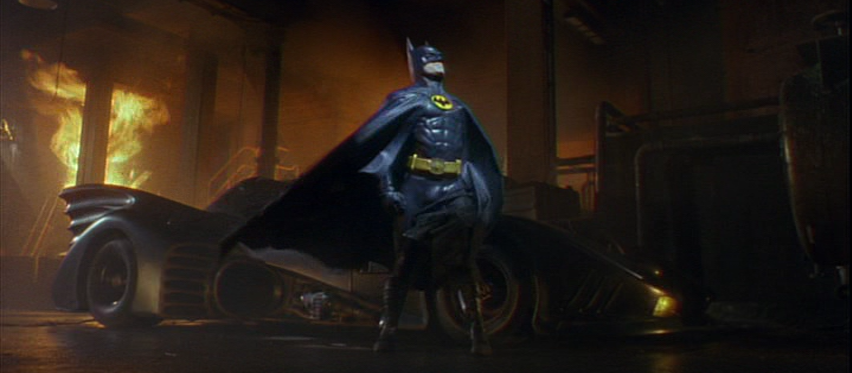
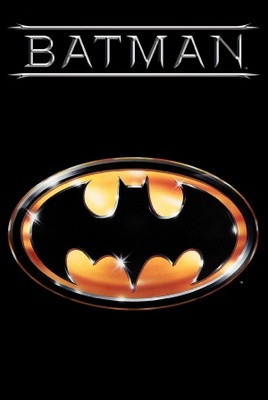
“You ever dance with the devil in the pale moonlight?”
Although Superman was arguably the first superhero blockbuster, Tim Burton’s Batman was more of a trendsetter and remains an early pinnacle of the genre. It has elements of grit and darkness instead of pure campiness while maintaining a playfulness that superhero movies eventually began to shy away from. Fresh off his unhinged performance in Burton’s Beetlejuice (1988), Michael Keaton gives a surprisingly nuanced performance as the aloof billionaire Bruce Wayne, while Jack Nicholson carries the film in a brilliant portrayal of the Joker. It’s stylish and consumable, making up for a lack of substance with an outlandish charm that audiences nowadays would scoff at. (Or is it just that studios always play if safe now and don’t even give us the chance to scoff?)
After spending decades in comic books and being featured in the campy 1966 film and television series starring Adam West, the Batman comic series was adapted by Burton into a violent live-action film that (for better or worse) helped usher in the current trajectory of the modern superhero genre. The serious, dark adaptation was envisioned by Michael Uslan while he taught the first ever college course on comic book history. Uslan and Benjamin Melniker purchased the rights to the film an entire decade before its release (around the same time that Superman was hitting theaters). A relatively unknown figure in the world of cinema, Uslan worked for ten frustrating years to see his passion project brought to fruition. He was rejected by every studio he approached and turned down the only opportunity he was given—to move forward with a campy rehash—deciding that giving up was better than compromising his vision.
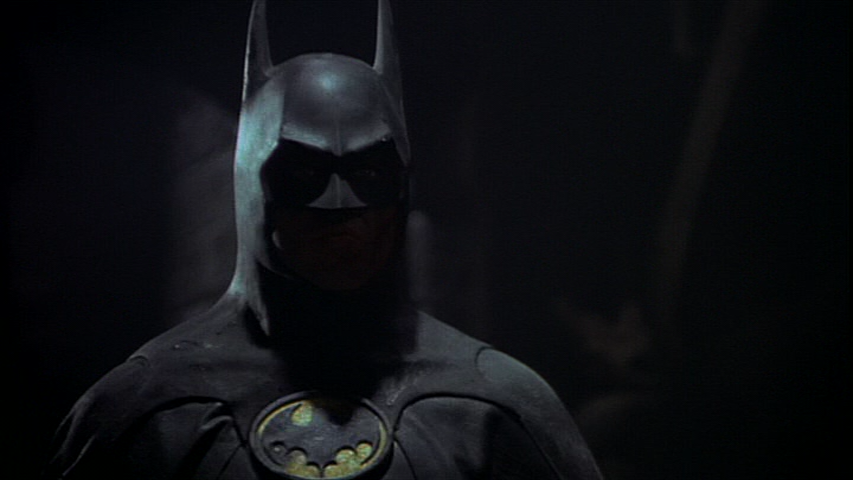
He was finally able to strike a deal, and when Burton was brought on board after the successes of Pee Wee’s Big Adventure and Beetlejuice, he brought with him a macabre aesthetic that matched what Uslan envisioned. The final film is not as gritty and “realistic” as Christopher Nolan’s later trilogy, but it certainly set a tone for superhero movies that had not been tried before and has been copied countless times since. It predates the grit and grime of The Crow (1994) and Blade (1998) by quite a few years, presenting us not with the ka-powing Batman of the cheese-filled 1960s (try watching a video of ‘The Batusi’), but with a mysterious figure who instills fear in the general population and criminals alike.
The city officials—including Batman regulars Harvey Dent (Billy Dee Williams) and Commissioner Gordon (Pat Hingle)—disapprove of Batman’s vigilante crimefighting. There is no Bat-Signal, and the authorities are just as wary of Batman as they are of the gangsters in the city. These tensions lead to a scene in which Jack Napier (Jack Nicholson) falls into a vat of chemical acid, bleaching his skin and leaving his face in a permanent rictus smile. Though it’s not particularly complex or creative, the plot then pits the Joker against Batman as they vie for the hearts of the people of Gotham City.
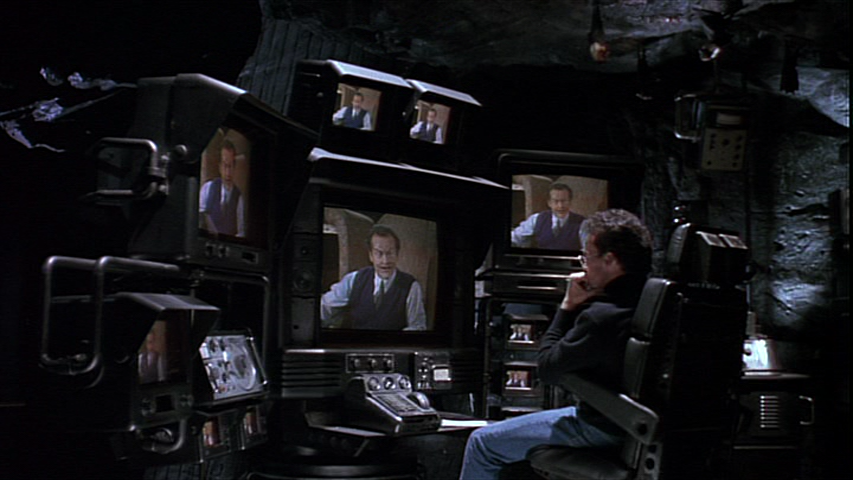
Anton Furst’s set design is wonderful, and one of the reasons I enjoyed the film as much as I did. In the current era, many films use endless amounts of computer generated imagery to create “realistic” settings, and it is refreshing to see how well the miniature set and the practical effects have held up.1 It is reminiscent of 1920s German Expressionist films such as The Cabinet of Dr. Caligari and Metropolis. That the Joker could possibly seduce the people of Gotham becomes a believable outcome when we are presented with the richly designed cesspool of a city—churning with filth, garbage strewn everywhere, and a mish-mash of crude architecture giving it an off-beat noir vibe. Junkies and prostitutes mill about the streets and mob bosses operate without fear. Amidst all this, the city council still intends to move forward with the city’s 200th anniversary parade.
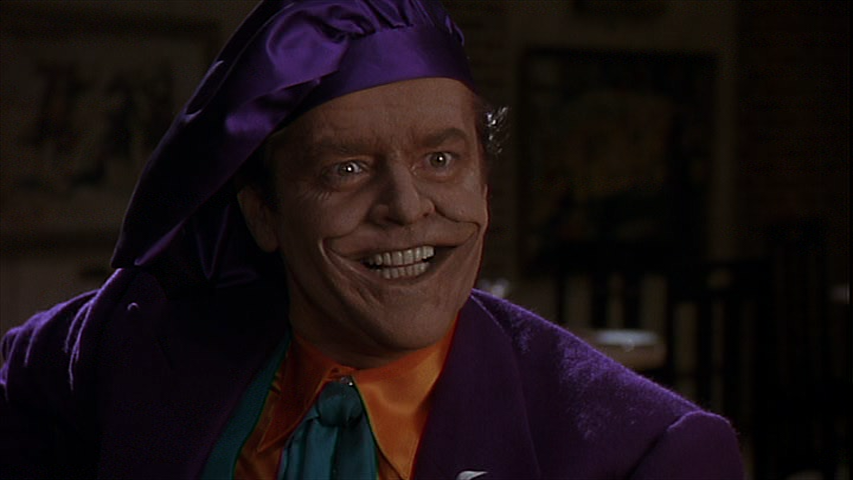
Nicholson steals the show (and indeed, he is billed ahead of Keaton), dominating basically every scene that he is featured in. As the plot progresses, the Joker begins taking over the city in different ways—hijacking the news, distributing harmful chemicals in hygiene products (which humorously forces news anchors to appear on air without make-up), and vandalizing an art museum. The latter occurs in a fun scene (that would almost undoubtedly be vetoed by an exec if a director tried to put it into a film today) where Nicholson dances his way through the place in time with a Prince song blasting from a boombox carried around by one of Joker’s goons. Nicholson’s performance is delightfully different and generally more fun than the modern portrayals of the Joker which take the character more seriously (The Dark Knight, Suicide Squad, The Joker). It’s not necessarily the case that Nicholson’s performance is better than theirs—Heath Ledger and Joaquin Phoenix deservedly received praise for their roles—but that it is a purer portrayal of the character. He isn’t just mischievous in his maneuvers, but he is amusing and unpredictable to watch. There are visual gags, physical comedy, and exaggerated mannerisms. He is almost always toeing a fine line between hilarious and frightening, and has a nearly endless supply of one-liners, e.g. “Never rub another man’s rhubarb,” “This town needs an enema,” or “I am the world’s first fully functioning homicidal artist.”

Beneath the stylized Batman-vs-Joker surface is a human drama focused on photographer Vicki Vale (Kim Basinger), reporter Alexander Knox (Robert Wuhl), and their pursuit of Batman’s identity. There is an amusing scene where the duo attend a fundraiser at Bruce Wayne’s mansion, and interact with the man for several moments before he reveals that he is the elusive host. This version of Bruce Wayne isn’t famous as he is in many other adaptations. Keaton plays the character as an eccentric yet ruthlessly smart man, intentionally reclusive and weird. It’s hard to imagine a director other than Burton (who had just worked with Keaton on Beetlejuice) choosing Keaton for the role, but it works well, especially when he is portraying Bruce Wayne.
Inevitably, Vicki and Bruce develop a romantic interest in one another. This was the least interesting portion of the film for me. It offers an avenue to explore Bruce Wayne’s childhood and helps jog the memory of the Joker murdering his parents (in one of several major departures from the comic standards; another glaring one is that Batman kills people), but it doesn’t sit quite right next to the rest of the elements in the film.
Wuhl’s portrayal of Knox is a highlight. His lines—many of which were improvised by the actor with Burton’s encouragement—offer brief moments of levity and he is a joy to watch having fun on screen, seemingly always ready with a witticism. Only a minor character, Knox was supposed to die in the original draft of the film and his body used to create the shadow of the Bat-Signal. However, according to the actor, the producers enjoyed his work so much that they decided to let him live, and he is only knocked unconscious in the climactic scene. Unfortunately, even though Burton helmed the sequel, Wuhl did not reprise his role.2

What the screenwriters did ever so smartly was set up conflicts between Batman and the Joker as well as between Bruce Wayne and the Joker. Keaton does an excellent job of portraying a comic book character who responds to childhood trauma by dressing up and becoming a vigilante. In the Joker, Bruce Wayne finds a kind of kindred spirit, becoming mesmerized by the face-painted gangster who nonchalantly guns down a group of citizens in front of the city hall and tosses cash from a parade float. When Bruce is finally ready to confess to Vicki that he is the Batman (the reveal is unfortunately bungled later when Alfred simply brings her to the Batcave; it’s so lame that they make fun of it in the sequel), the Joker breaks into her apartment. Bruce defends Vicki by brandishing a fire poker and raising his voice. “You wanna get nuts?” he shouts. “Come on! Let’s get nuts!”
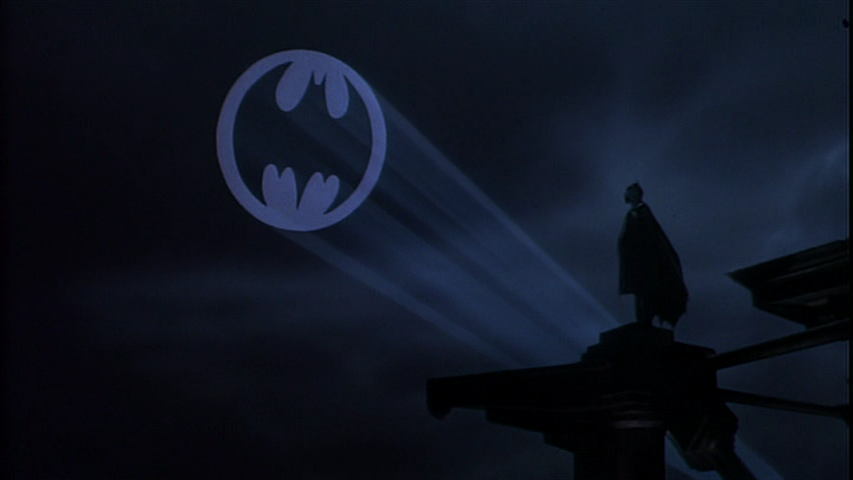
Like The Crow, the climax of Batman involves the villain nonsensically dragging a loved one to the top of a cathedral (it turns out that most of the odd narrative decisions were departures from the script dreamed up during filming). It provides us with some cool gothic imagery, and we get to see the Joker fall to his death, and then they introduce the Bat-Signal—a hint at a sequel. Like Superman—which had only just concluded with its fourth installment in 1987—Batman spawned its own uneven series, resulting in three different Batmans (Batmen?) spread across four films. Keaton portrays the character again in Batman Returns; Val Kilmer steps into the famously nippled Batsuit for Batman Forever, and George Clooney portrays the character (also in a nippled Batsuit) for the finale in Batman & Robin. Based on the film’s success, DC launched Batman: The Animated Series, which in turn led to a series of other shows based on DC characters.
The film was a massive marketing success as well, generating tens of millions of dollars in ancillary revenue. Although Keaton’s casting was unpopular, a strong trailer and billboards bearing only the Batman symbol generated a lot of buzz for the film. Nicholson, a lifelong Batman fan, accepted a lower payment upfront in exchange for a percentage of the film’s earnings, netting him upwards of $60M for the role when the film was a success and toy sales went through the roof. (Hilariously, he also included in his contract that he be given days off from shooting to attend L.A. Lakers games.3)
It’s hard to overstate how important this film is for the current era of filmmaking. We can blame George Lucas and Steven Spielberg for ushering in the mega-blockbuster, but the current trend of dark, self-serious superhero movies dominating the box office was undeniably kicked off by Burton’s Batman.
1. Don’t get me wrong, CGI has its uses. Exceptional films like Interstellar (2014) or Blade Runner 2049 (2017) required CGI to do things that would have been essentially impossible without it. However, I tend to become exasperated by action movies that feature toppling buildings and picturesque car chases left and right. I’d much rather see smaller scale physical effects when possible.
2. Wuhl appeared again as Knox in the Supergirl television show in the year 2019 (!), which is admittedly pretty cool (even though I think most of those shows are generally not very good).
3. Nicholson’s Lakers fandom is so legendary that when shooting The Departed, which is set in Boston, he forbade anyone from wearing Celtics gear on set.
Sources:
Chapman, Tom. “Tim Burton’s Original Batman Script Included Another Character’s Death”. CBR. 22 June 2019.
Carey, Matt. “You don’t know Jack (Nicholson)”. CNN. 8 November 2013.
Burton, Byron. “The Battle to Make Tim Burton’s ‘Batman'”. Hollywood Reporter. 21 June 2019.
“Top 10 Celebrity Lakers Fans”. NBA.com. (Archived).